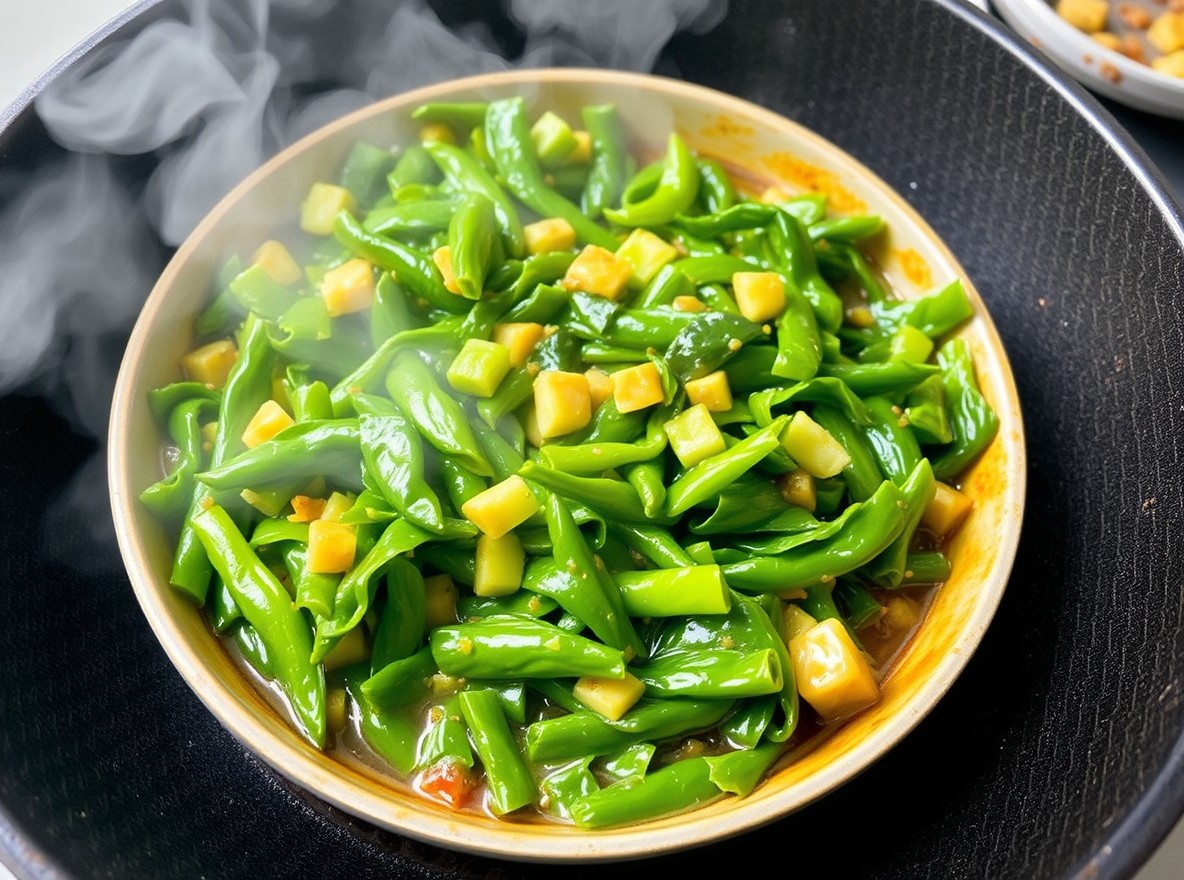Introduction:
Sukuma Wiki (Collard Greens), which translates to “push the week” in Swahili, is a popular Kenyan dish made with collard greens. It’s a simple, nutritious, and flavorful vegetable side dish that accompanies a wide range of Kenyan meals, including Nyama Choma (grilled meat) and Ugali. The greens are sautéed with onions, tomatoes, and spices to bring out their natural flavor. Sukuma Wiki is loved for its vibrant green color, health benefits, and the ease with which it can be prepared. It’s also considered a go-to dish for adding essential nutrients to a meal, often enjoyed by people of all ages.


History & Cultural Significance
Sukuma Wiki has deep roots in Kenyan food culture. Historically, collard greens were introduced to East Africa through trade and agricultural expansion. Over time, they became a fundamental part of everyday meals, particularly in rural and urban low-income households. The dish is not tied to festivals or royal traditions but holds immense cultural value as a food that sustains families and symbolizes resilience and ingenuity.
Ingredients & Regional Variations
Key Ingredients:
Fresh collard greens (Sukuma Wiki)
Onions
Tomatoes
Garlic (optional)
Salt
Cooking oil
Regional Variations:
In some regions, Sukuma Wiki is mixed with spinach for added flavor and texture.
Some variations include beef or chicken to make it more filling.
In urban areas, modern adaptations include adding spices such as cumin and chili for a bolder taste.
Cooking Process & Difficulty Level

Sukuma Wiki is beginner-friendly and requires minimal cooking experience.
Step-by-Step Guide:
Wash and finely chop the collard greens.
Heat oil in a pan and sauté onions until golden brown.
Add tomatoes and cook until soft.
Stir in the chopped Sukuma Wiki and cook for 3-5 minutes, ensuring it remains green and slightly crunchy.
Season with salt and serve hot.
Where to Eat Sukuma Wiki (Collard Greens)
Sukuma Wiki is available in homes, restaurants, and street food stalls across Kenya. Some notable places include:
K’osewe Ranalo Foods (Nairobi): Known for authentic Kenyan cuisine.
Mama Oliech Restaurant (Nairobi): Serves Sukuma Wiki alongside fish.
Local street vendors and markets where it’s freshly prepared and served with Ugali.
Pairing with Drinks & Side Dishes
Sukuma Wiki pairs well with:
Ugali: The most common accompaniment.
Rice: A lighter alternative to Ugali.
Chapati: Adds a soft, chewy texture to balance the greens.
Drinks: Best paired with fresh juice, tea, or traditional fermented milk (Mursik).
Fun Facts & Lesser-Known Trivia
Sukuma Wiki is sometimes referred to as the “Kenyan superfood” due to its rich nutrient profile.
It is popular among athletes for its high iron and vitamin C content.
The dish is also found in neighboring countries like Tanzania and Uganda under different names.
Health Benefits & Nutrition
Sukuma Wiki is packed with essential nutrients, including:
Vitamin A & C: Boosts immunity and improves skin health.
Iron & Calcium: Strengthens bones and prevents anemia.
Fiber: Aids digestion and promotes gut health.
Low in calories: Ideal for weight-conscious individuals.
Vegan, gluten-free, and keto-friendly variations exist by using minimal oil and avoiding processed seasonings.
How to Cook It at Home (Best Sukuma Wiki (Collard Greens) Recipe)
Ingredients:
2 bunches of collard greens
1 onion, chopped
2 tomatoes, chopped
2 tbsp cooking oil
Salt to taste
Method:
Wash and chop the collard greens finely.
Heat oil in a pan and fry onions until golden brown.
Add tomatoes and cook until soft.
Stir in the greens and cook for 3-5 minutes.
Serve hot with Ugali or rice.
Tips:
Don’t overcook to retain nutrients.
Add a splash of lemon juice for extra flavor.
Global Influence & Fusion Cuisine
Sukuma Wiki has inspired fusion dishes worldwide:
In Western cuisine, it is used in stir-fries and salads.
In Indian cuisine, it is sometimes cooked with spices like turmeric and cumin.
In the U.S. and Europe, it is often included in vegan bowls and smoothies.
Comparison with Similar Dishes
Sukuma Wiki is similar to:
Southern U.S. collard greens: Both dishes are sautéed but Southern collard greens often use bacon.
Ethiopian Gomen: A spiced collard greens dish with garlic and ginger.
Brazilian Couve: A side dish made with sautéed greens, usually served with feijoada.

